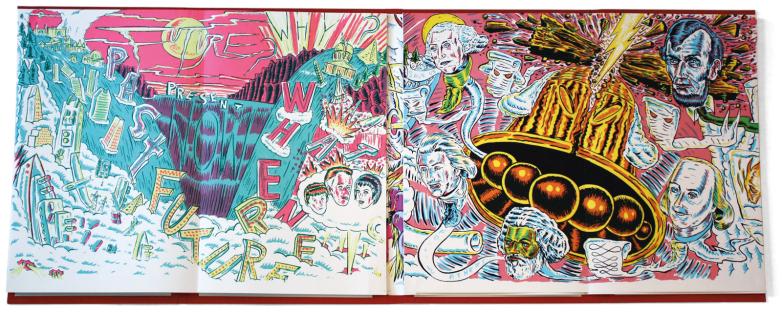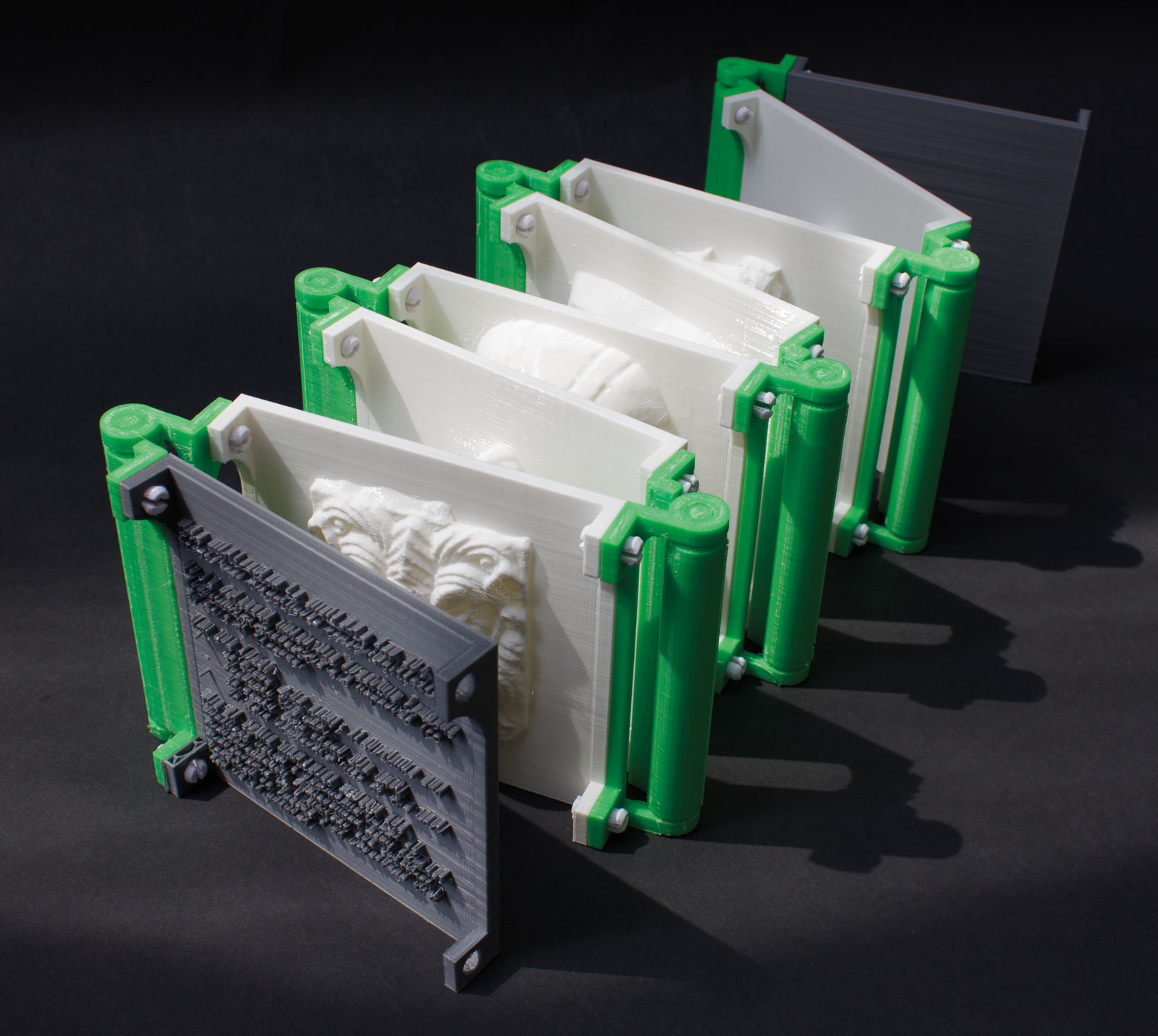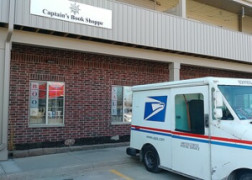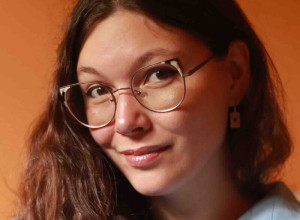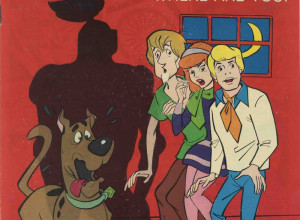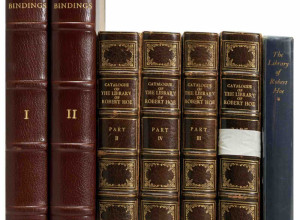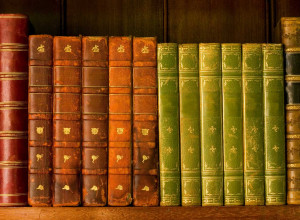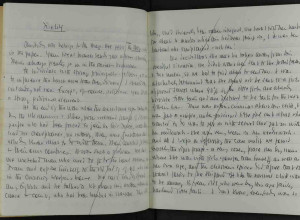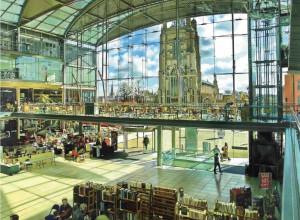Booklyn is content with its current situation, yet ambitious. In addition to its robust representation of artists, they publish three or four books a year, they co-sponsor books, run a gallery that shows mostly flat art, and manage an education program that invites anyone with an idea to come in and receive guidance and training on making editions and artist’s books. They coach artists and give them career advice. “How do you become a book artist? Just come and see us,” said Tebbe. Last year they sold $750,000 in artwork. This year, Weber said, “We hope to break a million.”
Book artist Russell Maret described Booklyn as an organization that is “blanketing the earth with artists’ books.” He first worked with Weber and Tebbe in 2009 for his book Æthelwold Etc. “It was my most successful book, and they sold 20 of 44 in a matter of a couple months. This was a book that was multiple thousands of dollars. They are good at selling work.”
Maret continued, “Marshall is an artist as well, so they come out of this world. Booklyn locates talented living bookmakers and promotes their work. They’re trying to create an understanding in the book-collecting public that there are contemporary books worthy of collection rather than just being books collected by dead people, which, don’t get me wrong, I also love.”
Silverberg said she sees Booklyn’s role as distributor as a demonstration of the significance of the printed word. “There’s a timeline. Collectors should see that this container of information of civilization’s most important evidence is on a continuum. It’s very much an alive thing and the people who collect and adore it should look not only past but forward.”
When Tebbe meets book collectors who are more familiar with first editions by famous writers, she shows them what she described as “a hodgepodge of incredible things”: signed fine press books by artists like Maret, hand-drawn works by graffiti artist CUBA (Clarence Robbs), and prints by the anonymous Egyptian artist known as Ganzeer. “I would show the Zapatistas prints, because they should see them,” she added.
Now that Brooklyn’s book scene has exploded, with new dealers, bookstores, publishers, and book fairs, the borough’s popularity has caused some trouble for the Booklyn name, a registered trademark the organization has recently had to sue to defend. Booklyn has turned out to be a descriptor of the borough as a whole, and, as Booklyn knows well, everyone around the world wants a piece of what it has to offer.




